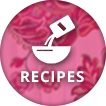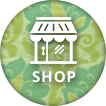Beth Hillson is a name you hear often in the gluten-free community. When I was sent her new gluten-free cookbook to review I was very excited. Who exactly is this gluten-free master Beth Hillson? That’s the exact thought I had. Before reading Beth’s cookbook ” Gluten-Free Makeovers” I got to get a few of my questions answered about Beth.
Read below for the interview and stay tuned for the review in two weeks!
When were you diagnosed with celiac disease?
I was diagnosed in 1953 and again in 1976. I was a small child when I was diagnosed the first time. They took away all my food and fed me bananas for several weeks, or maybe it was months. Gradually, my mother introduced new foods – – leaving starches including corn, rice and potatoes – – until the very last. I was on this diet for 3 ½ years. When everything was added back, the doctor told me I was cured. No one mentioned the word, “gluten.” When symptoms returned, I went from doctor to doctor complaining about my stomach. Each one diagnosed me with a different ailment – – “nervous stomach,” psychiatric problems, lactose intolerance, and IBS. It took several years and a second biopsy before I was rediagnosed with celiac disease. This time the doctor knew that gluten was causing the problem but he didn’t fully understand the diet. Corn Flakes and Rice Krispies were on the list of foods I could eat. He even told me that beer was fine. So I educated myself. I went to culinary school to understand how foods are prepared and how to replace the gluten in the recipes. It was my only choice unless I wanted to eat baked potatoes and naked burgers for the rest of my life.
What was the hardest part for you switching over to being gluten-free?
There was nothing available by way of products or resources when I was diagnosed. My cravings motivated me to teach myself how to cook and bake gluten-free. If I wanted a cake, I had to recreate it with gluten-free ingredients. But I always viewed this as a challenge rather than a liability. A positive attitude and a good support system turned this from a dire prognosis to a culinary adventure. It’s a journey I’ve been on ever since.
How has the gluten-free community changed since you were diagnosed with celiac disease?
We’ve gone from zero to sixty miles an hour in this industry since I was diagnosed. I can’t even begin to describe all the changes. But here’s an example. When I created Gluten-Free Pantry in 1993, we were still thinking that 1 in 1,000 people had celiac disease. The possibility that many others had gluten sensitivity was not even in the picture. I often said I could stand on the street corner in Manhattan with a plate of my Chocolate Truffle Brownies and never come across another celiac, even if I stood there for a full day. Today, I can’t go anywhere without running into half a dozen people with celiac disease and another dozen who are gluten intolerant.
You took the gluten-free world by storm, baking out of your own home and evolving into a successful business. Tell us in your own words what this whole process was like for you.
I guess I was a pioneer. The business came out of a need. I was making baking mixes so I could quickly whip up a bread or pancakes or a quick bread when I wanted something good to eat. (After all, freshly baked has always been the way to go.) Then it occurred to me that I could save some money on ingredients if I bought a 50 pound bag of rice flour. Once it arrived, I knew I had to find a few other people to share the mixes with or I would never use up all that flour. I had no idea the business would take off the way it did. For the first three years, I was working night and day just to keep up with demand. I couldn’t imagine marketing my products proactively. The company was growing more than 30% per year just by word of mouth. That’s amazing when you’re a little business.
What was your purpose in selling your first gluten-free company?
I became disheartened when so many entrepreneurs began copying my products. Mix companies were showing up everywhere. There must be over a hundred of them today and each one has a sandwich bread, a pizza mix, a brownie, a cupcake, and so on. They all claim they started the business because there was nothing good out there. But honestly, there are plenty of great mixes now. When I started Gluten-Free Pantry there truly was nothing else available for gluten-free consumers. I wish people would copy the pioneering spirit instead of copying each other and create products that are a unique and fill a void in our lives.
When I created the company, I was a lifeline for our customers. The first time we moved to a larger location, the phone lines were down for nearly a day and people freaked out, fearing we had gone out of business! I’ll never forget when a customer called the local police to check on us and someone came to find me. I had that kind of connection to our customers and I felt I had a commitment to help them live well on a gluten-free diet. But, by the time I sold the company, I did not feel that way. I knew our customers had other choices. I didn’t feel like I was letting people down.
What did you do with your “free time” after that?
I spent time with my elderly parents until they passed away. Then I went back to school to get an MFA in creative writing and wrote a memoir as my thesis. It’s still in process, but I hope to publish it one day soon. And then I wrote a cookbook, “Gluten-Free Makeovers.”
On your website, glutenfreemakeovers.com, you have a section called “baking basics” where you help many people who are having trouble baking gluten-free. You must enjoy helping others be successfully gluten-free in their own kitchens. What inspired you to start glutenfreemakeovers.com?
I think “makeover” is my mantra. I have always looked at ways to recreate favorite foods so we can enjoy them. It was the concept that led me to create the GF Pantry and the recipes in the cookbook and on the web site. I really do enjoy helping people. This is a challenging lifestyle, but not impossible, especially with all the variety these days. As long as people view this as a challenge and understand the rewards are delicious, safe foods, they will happily embrace the gluten-free lifestyle. I can’t begin to describe the feeling I get when I see someone smile because they baked something delicious or tried something yummy that I fed them. This is as good as it gets.
You have quite a record of cooking and baking. Was this something you always had an interest in?
Coming from a childhood where I ate bananas seven different ways, I have always been hungry for good food and great variety. I think that childhood experience heightened my culinary curiosity. When I was a kid, I trolled the neighborhood looking for handouts, for things that were not allowed on my diet. I visited my friends’ homes and checked out their refrigerators. I asked the mothers what they were serving for dinner and hinted boldly that I might like a taste. I bought candy at the penny candy stores in my neighborhood. (Sugar was another thing I couldn’t have.) Food became intensely interesting to me. That hungry still persists.
You recently published a gluten-free cook book “Gluten-Free Makeovers” published by Da Capo Press . What inspired you to do so?
I have gathered so many great recipes since I started Gluten-Free Pantry and then after selling it and writing recipes and articles for Living Without Magazine. I wanted a place to organize them. And, frankly, they are good recipes. I wanted others to enjoy them, too. By the way, I cook from my own cookbook all the time and so does my sister who was diagnosed with celiac disease seven years ago.
How did you choose which delicious recipes would be included in your cook book versus those which would not be?
I picked recipes that filled a void – – favorite family traditional dishes, wonderful cakes and cookies that I thought we should all have. After I set up an outline and chapters, some of the recipes had to be shelved. I had way too many. But that’s good news. Now I have enough material for another book someday. In addition, people are always sending me their recipes to make over. That’s fun, too.
You have come up with so many gluten-free recipes, any plans on another cook book in the future?
Perhaps I will do another cookbook. I think the big deterrent is that there are so many cookbooks out now.
Anything else you want to share?
Lots of people are intimidated by gluten-free cooking and overwhelmed by the diet and lifestyle. I encourage people to give it a try and not be discouraged. Take baby steps at first. By that I mean start with a couple of mixes from a company you’ve heard about and trust. Become accustomed to the way gluten-free flours handle and branch out slowly. Find a cookbook (hopefully mine!) and try one or two recipes just to get started baking from scratch. Next thing you know, you’ll be making your own flour blends and making over mainstream recipes just like I do. Just keep a positive attitude.
Miranda Jade Turbin
From our home to yours, Tina Turbin
If you have any questions or suggestions just email me at Info (at) TinaTurbin (dot) com.








